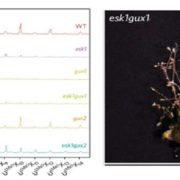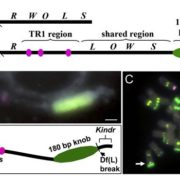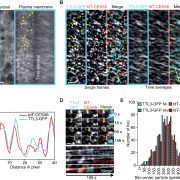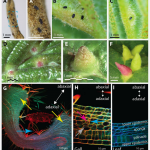Formation of flavone-based wooly fibres by glandular trichomes of Dionysia tapetodes (bioRxiv)
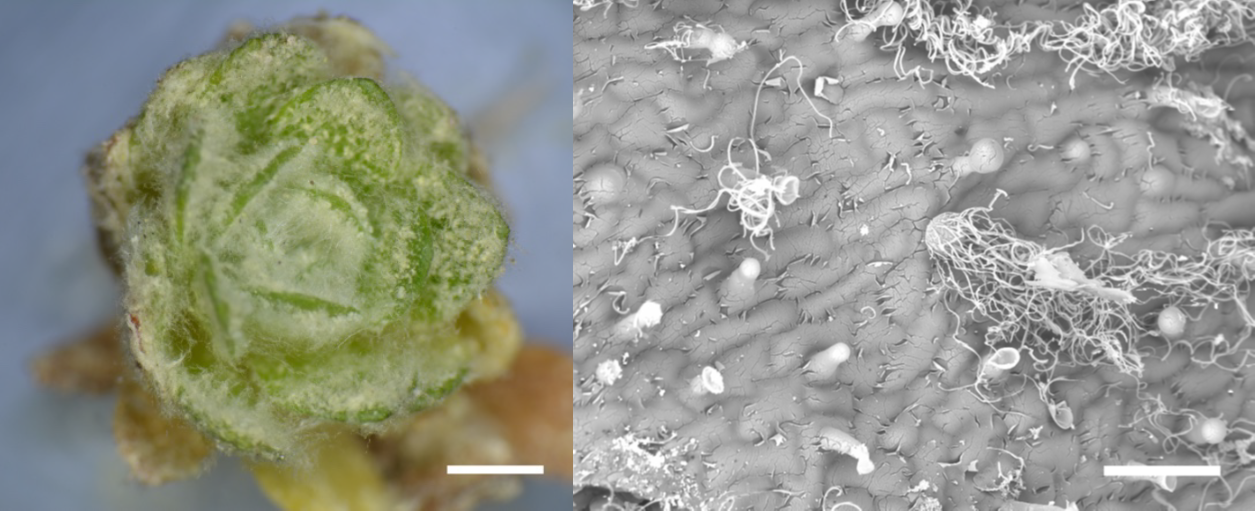
Many people are familiar with the popular houseplant Cephalocereus senilis, which also known as old man cactus because it is covered with long white hairs that are thought to protect it from frost and UV light. A similar function is described for the wooly fibers that cover the alpine plant Dionysia tapetodes, investigated here by Bourdon et al. The authors found that unlike related species that produce a powdery or dust-like covering or farina, D. tapetodes is covered with wool-like fibres averaging 1.6 um in diameter. They found that these fibres are extruded from a point in the heads of glandular trichomes, raising the questions of what they are made of and how are they assembled. Whilst powdery farina is made up of flavones, the fibres are made up of flavones and substituted flavones, which might provide the additional hydrogen bonding needed to maintain the fibre structure. TEM imaging suggests that the fibres are extruded through small holes in the glandular trichome heads from materials stored in the vacuole. As the first author noted on Twitter, these plants are able to “weave their own fabric”. (Summary by Mary Williams @PlantTeaching) bioRxiv 10.1101/2020.10.06.320911


